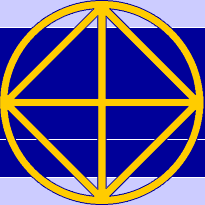Book Presentation
"Lessons on Purusha Sooktam"
by Dr. Ekkirala Krishnamacharya

Purusha Suktam is a hymn of the Rig Veda that is offered to the Cosmic Person as a worship Sukta. IThe Veda recognises a Cosmic Man who was prepared and fixed (crucified) in the Mahat by the Devas and the whole universe is visualised in him. The Cosmic person is described as having four hands which represent the four-fold creation. Later when creation progressed, human form is also prepared in the image and likeness of the Cosmic Person. Master E.K. regularly chanted Purusha Sukta for decades and imparted the Sukta to his followers. He instructed his followers to regularly chant Purusha Sukta on a daily basis.
The book is suited for persons who want to gain a deeper understanding of Purusha Sooktam.
Content: Introduction; Purusha Sooktam – Text; Explanation of Stanzas (Slokas).
Kulapati Book Trust Visakhapatnam, India, 2006.
Sample:
Explanation of Stanzas: Stanza 1Word Division
SAHASRA SIRSHA PURUSHAHA
SAHASKAKSHAHA SAHASRA PAT
SA BHUMIM VISWATO VRUTWA
ATYATISHTAT DASANGULAM
We take down the translation or import of the stanza :
This is the original text of the first mantram from Purusha Sukta and according to Sanskrit syllable division we have eight syllables in each line. SA is one syllable, HA the second syllable, SRA the third syllable, SIR one syllable, SHA one syllable, PU one syllable, RU one syllable, SHA one syllable. That is all. HA is not a syllable. lt is called the consonantal ending. There is no vowel in it in the pronounciation. So, there are eight syllables. Eight syllabled meter speaks of the eighth one who is beyond the seven planes of existence. The Purusha is the eighth one from whom all the seven planes of creation emerge.
The Purusha has thousand heads. He has thousand eyes and thousand feet. He has pervaded and surrounded the globe of our creation in all dimensions. He stood beyond these dimensions by ten digits.
Now let us try to understand the meaning. Each stanza requires a commentary like the Secret Doctrine. lt is the nature of any archaic stanza from anyone of the ancient books in any language, let it be Old Sanskrit or Hebrew or Egyptian. Because the text was the same and from age to age the same thing has been translated into their own language of the centuries. So you will find the same thing when you go inside. Now, just one or two peculiarities we will touch here.
We spoke about the various meters. The first meter is called the single syllable OM. That is the total utterance of the whole creation as one unit or exhalation. That is called, the one-syllabled meter; uni-syllabled meter. That syllable is called 'the Word' in every scripture and every language. In the Bible you find 'The Word was with God and the Word was God'. First there was the Word. In one of the languages the word is known as OM. It is called the one-syllabled meter which is depicted by Blavatsky like this: ⊙ (circle with a central point). On the first page of the archaic stanzas found in Sanskrit you find this circle with a central point ⊙ as the symbol of the one-syllabled meter or the whole universe emerging out as one unit. And the two put together is called I AM in every language. You can use English or French or German or Sanskrit or Latin or Greek or Hebrew but it is the same.
You see in the Old Testament that Moses goes high up to the Self-luminous centre which is wrongly translated as the burning bush. It is not burning, but it is brilliant. It never burns. It is ever brilliant and self-luminous. (It is translated by some fellow as the burning bush.) Moses goes there and asks 'My Lord what is the name of my God?' He says: 'You go to Egypt and tell the Pharaoh that the name of your God is I AM, THAT I AM'. See, how God is very careful. lf he had said tell him my name is I AM then Moses would have gone there and told that he is that he is. Then god is dead. It is a dead letter. So, to prevent this He said, I am that I am. He never said 'my name is I am', but He said 'l am that I am'. That means, wherever you express your name you can express me only if you express I am here. Only through that word you can express me. So there can be no proxy, there can be no impersonation.
That is why in the Gospel also it is said: 'I AM THE WAY'. That is what the Lord gives for that initiation, 'l am Life, I am resurrection'. Unfortunately, the Christians say 'He is the way'. So once again God is dead. In Sanskrit it is said 'Aham', that means I AM. This one-syllabled meter becomes next the two-syllabled meter ? Φ (circle with vertical line). So, we have to add 'SO'; that means 'He is Aham (I AM)'. When there is a created consciousness he says 'l am That' or He is myself. His name is I AM. So, here there are two syllables. The one who speaks of God and the God. That is what is called the first step of creation. This first differentiation of a created entity or a universe as a part of the Creator through the act of creation, then at this stage, it is called the two-syllabled meter.

 Circle of Good Will
Circle of Good Will Contact
Contact
